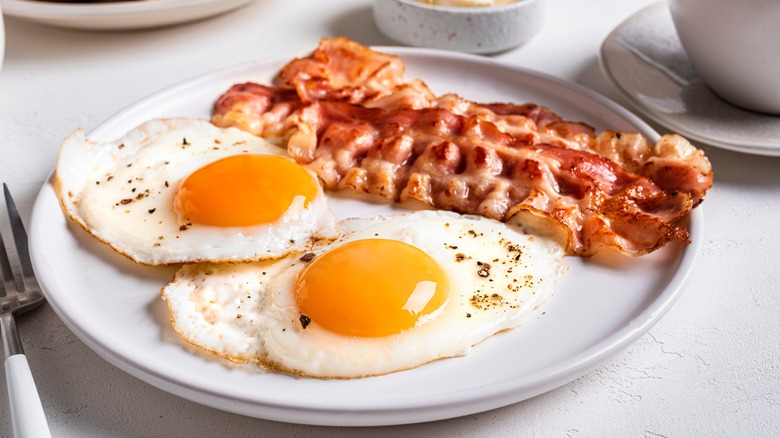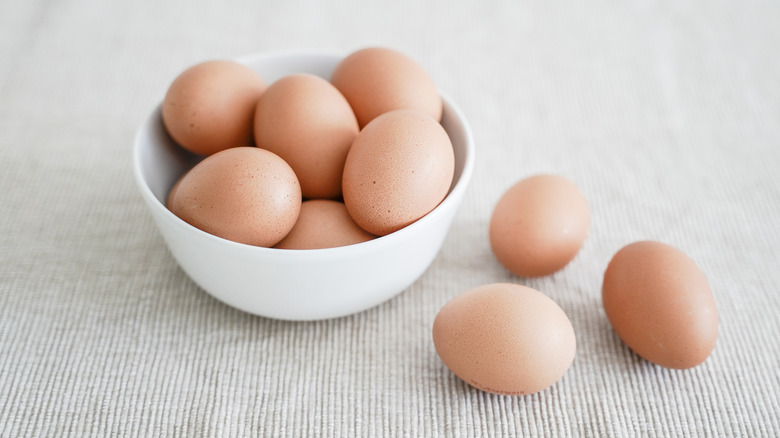The Easy Prep Mistake That Can Lead To Overcooked Fried Eggs
Fried eggs can go with your favorite breakfasts, in light lunches and dinners, or serve as a topping for burgers and stir-fries. While super versatile, they're also very basic, which gives the impression they should be simple to whip up. Anyone who's made fried eggs knows they can be tricky to cook evenly. Nelson Serrano-Bahri, chef and director of innovation at the American Egg Board, told The Takeout fried eggs are more likely to overcook if you don't bring the eggs to room temperature first, though he had some caveats.
"It's not that cold eggs are more prone to overcooking across the board — it's more about how you like your fried eggs," he explained. "If you're aiming for crispy, lacy edges and a runny yolk, starting with a cold egg can actually help achieve this. The contrast in temperature allows the whites to set quickly in a hot pan while the yolk stays soft. However, if you're cooking at a gentler heat for more even doneness, a room-temp egg gives you more control and reduces the risk of the whites overcooking while waiting for the yolk to set."
Serrano-Bahri said that if you don't have time for the eggs to warm up, you can bring them to room temperature quickly by putting them in a bowl of warm water in a sealed plastic bag. "If you only need one or two," he added. "Holding them in your palms for a minute or two can quickly take the chill off."
Cook fried eggs just the way you like them
In addition to being the right temperature, fried eggs should be fresh to help them to better hold their shape. Cracking each egg into a small bowl and then pouring it into the pan will help do the same thing. As key as egg temperature can be, how you cook the eggs is just as important (if not more so). Diner fried eggs always taste better than homemade because they have their own well-tested tricks and techniques. That's good news, since the right method will make your eggs come out just how you like them.
For tender fried eggs with a runny yolk, cook them in butter or oil over low heat in a covered pan. The trapped steam helps them cook gently and evenly. That means you don't have to cook them as long to get the top of the eggs done right, which risks an overdone bottom. You can add a teaspoon of water to the pan to create more steam, too.
If you like your eggs with crispy whites and jammy yolks, Serrano-Bahri told us it's "easier to achieve with cold eggs and higher heat." Take the eggs right from the fridge and fry them over medium-high heat uncovered. Tilting the pan and basting the eggs with oil will make them crispier and also helps cook the top. Once you've got the technique down, amp up your fried eggs with ingredients that make them unbeatable.

